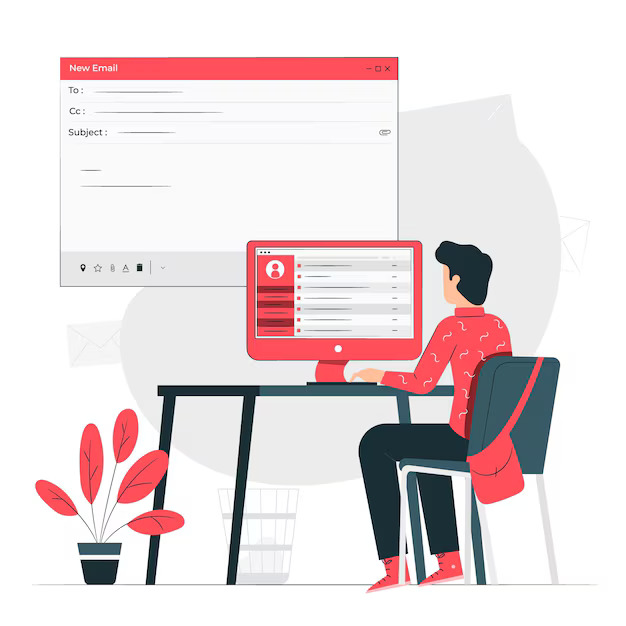Have you ever wondered how long an email address can be? While it might seem like a minor detail, the length of an email address plays a crucial role in communication and system functionality. Email addresses can be up to 254 characters long, with specific limits for the local part (before the “@” symbol) and the domain part (after the “@” symbol). In this blog, we’ll explore the structure of email addresses, the rules governing their length, and why these limits matter in real-world applications.
What is an Email Address?
An email address is a unique digital identifier used for sending and receiving electronic messages. Just like a physical address, an email address must follow specific syntax rules to ensure proper delivery. It consists of two main parts: the local part and the domain part, separated by the “@” symbol.
Local Part: This is the personalized portion of the email address, such as “john.doe” in “john.doe@example.com.” It can include letters, numbers, and special characters like periods (.), underscores (_), or hyphens (-). The local part can be up to 64 characters long.
Domain Part: This is the part after the “@” symbol, such as “example.com.” It identifies the email provider or hosting server. The domain part can be up to 253 characters long, ensuring compatibility with DNS (Domain Name System) standards.
Together, these two parts form a fully qualified email address, which must not exceed 254 characters in total. This limit is set by the Simple Mail Transfer Protocol (SMTP), the standard protocol for email transmission.
Why Does Email Length Matter?
The length of an email address has several practical implications:
Validation in Forms: When users enter their email addresses in online forms, input validation ensures that the address adheres to the correct format. Exceeding the character limit can result in errors or rejected submissions.
Database Storage: Email addresses are often stored in databases, and optimizing storage for millions of addresses requires adherence to length constraints. Allowing for the maximum length (254 characters) ensures that no addresses are truncated or lost.
Email Deliverability: Oversized email addresses can cause errors during transmission, leading to bounced emails or failed deliveries. Adhering to the 254-character limit ensures smooth communication across all email systems.
Real-World Email Length Limits
While the theoretical maximum length of an email address is 254 characters, popular email providers often impose shorter limits for usability and management purposes. Here’s how some of the major email services handle email address length:
Gmail: Limits the local part to 30 characters, while allowing up to 64 characters for the domain part. This makes Gmail addresses more user-friendly and easier to manage.
Outlook: Allows up to 64 characters for the local part and 255 characters for the domain part, making it more flexible for users with longer custom domain names.
Yahoo: Permits 32 characters in the local part and 64 characters in the domain part, ensuring compatibility with most email systems.
These provider-specific limits are important to consider when creating email accounts or developing email-based applications. Exceeding these limits can result in rejected sign-ups or delivery issues.
Common Misconceptions About Email Length
There are several misconceptions about email address length that can lead to confusion:
320 Characters is the Limit: Some believe that email addresses can be up to 320 characters long. However, this misconception arises from including additional formatting like angle brackets in email syntax. The actual limit is 254 characters.
Any Length is Acceptable: While some email providers may allow custom lengths, exceeding the standard 254-character limit can result in emails being blocked or bounced, impacting deliverability.
Shorter is Always Better: While shorter email addresses are easier to remember, they must still comply with the local part and domain part guidelines. A valid email address must include the “@” symbol and follow the correct format.
Email Address Validation and Security
Proper email address validation is essential for preventing issues like invalid entries or database errors. Developers must follow email validation techniques to ensure that addresses are stored securely and comply with length restrictions. Additionally, internationalized email addresses (IDN), which use Punycode encoding for domain names, must still conform to the 254-character limit.
Character Limit for Email Subject Lines
While email address length is important, the length of the email subject line also plays a crucial role in email communication. Research suggests that the optimal length for an email subject line is between 41 and 50 characters. This length ensures that the subject line is fully visible across most email clients and devices, increasing the likelihood that the recipient will open the email.
Gmail: Displays around 70 characters on desktop and 40 on mobile.
Outlook: Shows approximately 80 characters on desktop.
Mobile Clients: Often display only 30-40 characters.
Keeping your subject line within the 40-50 character range ensures that it is clear, concise, and fully visible to the recipient.
Preventing Issues with Email Length
To avoid common email issues related to length, follow these best practices:
Validate Email Input: Always check that an email address is correctly formatted when entered in a form. Ensure it includes the “@” symbol, doesn’t contain extra spaces, and adheres to the correct structure.
Optimize Database Storage: When storing email addresses in a database, allocate enough space to accommodate the maximum length of 254 characters. This prevents truncation or data loss.
Follow RFC Guidelines: Adhere to the standards set by the Internet Engineering Task Force (IETF) in RFC 5321 and RFC 5322. These guidelines ensure compatibility with email systems worldwide.
Conclusion
Understanding the maximum length of an email address is essential for seamless communication and compliance with Internet standards. While the technical limit is 254 characters, popular email providers like Gmail, Outlook, and Yahoo often impose shorter limits for usability. By adhering to these standards, validating email addresses properly, and optimizing database storage, you can avoid common pitfalls and ensure efficient email communication.
Whether you’re setting up a work email address or designing a secure form, these insights will help you maintain an error-free digital experience. Stay informed about the intricacies of email length, including non-ASCII characters and proper email standards compliance, to keep your email systems running smoothly.
By following these guidelines, you can ensure that your email addresses are both functional and user-friendly, whether for personal or professional use. For more information about maximum length of an email address check out.


